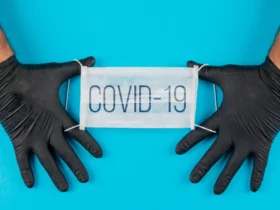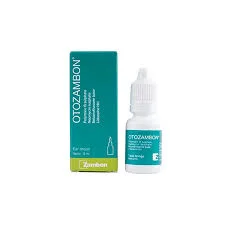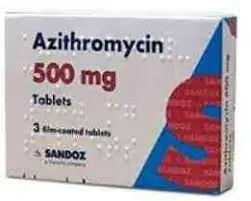Otozambon and Otosporin are effective ear drops for treating ear infections and reducing inflammation. They work wonders!. Both contain antibiotics and steroids to alleviate pain and swelling. Recommended dosages vary, and it’s crucial to follow your doctor’s instructions. They can interact with certain medications, so consult a healthcare professional before use. These drops are commonly available in the UAE and have proven effective for many ear-related issues.
What is Otozambon?
Otozambon stands as a notable ear medication, primarily available in the form of ear drops. Its efficacy lies in the active substance it contains, which plays a fundamental role in its therapeutic action.
The Active Substance in Otozambon
The primary active substance in Otozambon is dimenhydrinate. This compound is widely recognized for its antihistamine properties and is commonly used to alleviate symptoms associated with nausea, dizziness, and vomiting. In the context of ear health, dimenhydrinate serves as a crucial element in addressing various ear-related conditions, including inner ear inflammation, dizziness, and vertigo. Its presence in Otozambon highlights the medication’s effectiveness in providing relief and aiding in the recovery process within the ear canal.
What are the side effects of Otozambon?
Otozambon, primarily composed of phenazone, a medication used in ear drops, may elicit various side effects in individuals using this treatment. These side effects can be categorized into common and less common occurrences.
Common Side Effects:
Local Irritation: Among the most frequent side effects associated with Otozambon are temporary local reactions at the site of application within the ear. Users might experience mild irritation, discomfort, or a burning sensation after using the ear drops. These effects are typically transient and tend to resolve on their own without intervention.
Burning or Stinging Sensation: Some individuals may report a sensation of burning or stinging upon applying the drops into the ear canal. This sensation is generally mild and short-lived, diminishing as the body adjusts to the medication.
Less Common Side Effects:
Allergic Reactions: While less common, allergic reactions to Otozambon are possible. These reactions can manifest as itching, redness, swelling, or the development of a rash in or around the treated ear. Allergic responses might vary in intensity, ranging from mild discomfort to more pronounced symptoms requiring medical attention.
Exacerbation of Symptoms: In rare instances, individuals may experience exacerbation of existing symptoms or persistent discomfort after using Otozambon. Such occurrences might indicate an adverse reaction to the medication and necessitate prompt medical evaluation.
Understanding the potential side effects of Otozambon is crucial for users to monitor their response to the medication. While most side effects are mild and self-limiting, it’s essential to consult a healthcare professional if any adverse reactions persist or worsen.
Individual reactions to medications can vary significantly. Therefore, if you experience any unusual or severe symptoms while using Otozambon ear drops, it’s advisable to seek guidance from a healthcare provider promptly. They can offer personalized advice and, if necessary, recommend alternative treatments or adjustments to your medication regimen.
safeguarding your health and well-being is paramount. Remaining well-informed about potential side effects and promptly addressing any concerns that arise during your Otozambon treatment or with any other medication prescribed by a healthcare professional is crucial. Your proactive approach ensures a proactive response to maintain your health at its best.
Uses of Otozambon
Otozambon, featuring phenazone as its active component, is frequently prescribed to address diverse ear-related conditions. Understanding the proper application and usage of Otozambon is essential for its effective and safe use.
How Should I Use Otozambon?
The application of Otozambon ear drops requires careful and precise administration to ensure optimal efficacy and minimize the risk of adverse effects. Here are the steps for using Otozambon:
Preparation: Before applying the ear drops, it’s crucial to clean the external area of the affected ear(s) gently. This involves using a mild cleanser or sterile saline solution to remove any debris or excess earwax. Ensure your hands are clean before handling the dropper or touching the affected ear.
Dosage: Follow the prescribed dosage provided by your healthcare professional. The dosage usually depends on the severity of the condition and your individual medical history. Do not exceed the recommended dosage unless instructed by your doctor.
Application:
Shake the Otozambon bottle well before use to ensure proper mixing of the solution.
Tilt your head or lie down on your side with the affected ear facing upward.
Gently pull the outer earlobe upward and backward to straighten the ear canal for easier administration.
Hold the dropper close to the ear canal, without touching it, and carefully instill the prescribed number of drops into the ear.
Keep the head tilted for about a minute to allow the drops to penetrate deeply into the ear canal.
Avoid Contact: Avoid touching the ear canal with the dropper tip to prevent contamination and potential injury. Do not insert any objects, such as cotton swabs or fingers, into the ear canal after applying the drops.
Frequency of Use: Follow the recommended frequency of use as advised by your healthcare provider. This might involve applying the drops several times a day for a specific duration.
Monitoring and Follow-Up: Pay attention to any changes or adverse reactions after using Otozambon.
read more : Descontran 500 Uses and price in UAE
What is the recommended dosage for Otozambon?
Determining the right amount of Otozambon to take depends on factors like your condition and personal characteristics. Healthcare providers customize the dosage to suit your needs, aiming for the best results while minimizing side effects.
Here are some general guidelines:
Dosage Strength: The healthcare professional will prescribe the appropriate strength and how often to use it based on the severity of your ear condition.
Frequency of Use: Otozambon ear drops are usually applied multiple times a day, typically two to four times, as directed by your healthcare provider.
Duration of Treatment: The length of treatment varies depending on the type and severity of your ear issue. It’s important to complete the full course of medication as prescribed, even if your symptoms improve. This ensures the complete elimination of the underlying problem and helps prevent it from coming back.
It’s crucial to follow your healthcare professional’s dosage instructions exactly. Changing the dosage or frequency without consulting them can result in ineffective treatment or potential side effects.
What drugs may interact with Otozambon?
numerous medications carry the potential for interactions with Otozambon, possibly impacting its effectiveness or elevating the risk of adverse effects. These interactions might arise when Otozambon is used concurrently with other medications, supplements, or herbal products.
When considering other ear medications or topical treatments, or even medications containing similar analgesic or antipyretic components, potential interactions might arise when combined with Otozambon.
Consequently, actively engaging in communication with your healthcare provider becomes imperative. It’s essential to provide comprehensive information about all your current medications—whether prescription drugs, over-the-counter remedies, herbal supplements, or vitamins—whether currently used or intended for use alongside your Otozambon treatment. This proactive dialogue enables healthcare professionals to meticulously assess potential interactions, thereby facilitating necessary adjustments in medication regimens to ensure both safety and effectiveness.
Always seek guidance from a healthcare professional to mitigate the risk of drug interactions and ensure the safe and effective use of Otozambon.
FAQs about otozambon ear drops in uae
What is Otozambon ear drops used for?
Otozambon ear drops, with phenazone as the active ingredient, are great for tackling different ear-related concerns!. These ear drops serve several purposes:
Pain Relief: Otozambon is known for its analgesic properties, effectively reducing pain associated with ear infections, inflammations, or the presence of excess earwax.
Anti-inflammatory Effects: The medication possesses anti-inflammatory properties, aiding in the reduction of inflammation within the ear canal. This helps alleviate discomfort and associated symptoms caused by inflammation.
Managing Mild Ear Infections: Otozambon ear drops offer relief from pain and discomfort, aiding in managing mild ear infections. However, it’s crucial to follow proper usage guidelines for optimal effectiveness and comfort.
The multifaceted nature of Otozambon makes it a versatile solution for various ear conditions, offering relief from pain, reducing inflammation, and aiding in the management of mild infections. Following the guidance of a healthcare professional while using these ear drops significantly contributes to easing ear-related discomfort and promoting overall ear health
What are the side effects of Otozambon?
The use of Otozambon ear drops may lead to several potential side effects, though most are generally mild and transient. These side effects primarily manifest at the site of application within the ear and might include:
Local Irritation: You might feel a temporary discomfort or irritation in the ear where the drops are used. It’s usually short-lived!
Burning or Stinging Sensation: Some individuals might experience a mild burning or stinging sensation upon application. This sensation typically diminishes as the body adjusts to the medication.
Less Common Reactions: Allergic responses, like itching, redness, swelling, or the development of a rash in or around the treated ear, are infrequent occurrences.
Although these side effects are generally mild and temporary, it remains crucial to stay vigilant and monitor for any unexpected reactions or discomfort subsequent to using Otozambon ear drops. If any side effects continue or get worse, it’s a good idea to reach out to a healthcare professional for guidance and proper care.
What is Otosporin ear drops used for?
Otosporin ear drops serve as a specific medication designed to address ear infections and associated inflammation. This medication contains a combination of active ingredients: neomycin sulfate, polymyxin B sulfate, and hydrocortisone.
Uses of Otosporin Ear Drops:
Treating Bacterial Infections: Otosporin is primarily employed to combat bacterial infections within the ear canal. The combination of neomycin sulfate and polymyxin B sulfate acts as antibiotics, effectively targeting and inhibiting the growth of certain types of bacteria that may cause ear infections.
Reducing Inflammation: Hydrocortisone, a corticosteroid present in Otosporin, assists in reducing inflammation within the ear. This helps alleviate discomfort and symptoms associated with inflammation caused by bacterial infections.
By combining antibiotics to combat bacterial growth and a corticosteroid to reduce inflammation, Otosporin ear drops offer an effective treatment option for individuals suffering from bacterial ear infections. This ensures appropriate treatment and lowers the potential for side effects, promoting a safer and more effective recovery.
What is the generic name for Otosporin?”
The generic name for Otosporin, which denotes its active ingredients, is a combination of:
Neomycin sulfate
Polymyxin B sulfate
Hydrocortisone
This combination of active ingredients forms the generic formulation used in Otosporin ear drops, serving as a specific treatment for bacterial ear infections and associated inflammation.
Conclusion
Otozambon ear drops and Otosporin serve as valuable solutions for addressing various ear-related concerns. Otozambon helps with pain, inflammation, and mild infections, thanks to phenazone. Otosporin fights bacterial infections and reduces inflammation using neomycin sulfate, polymyxin B sulfate, and hydrocortisone. Both are helpful in different ways!














Leave a Reply